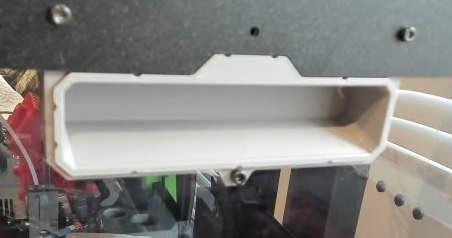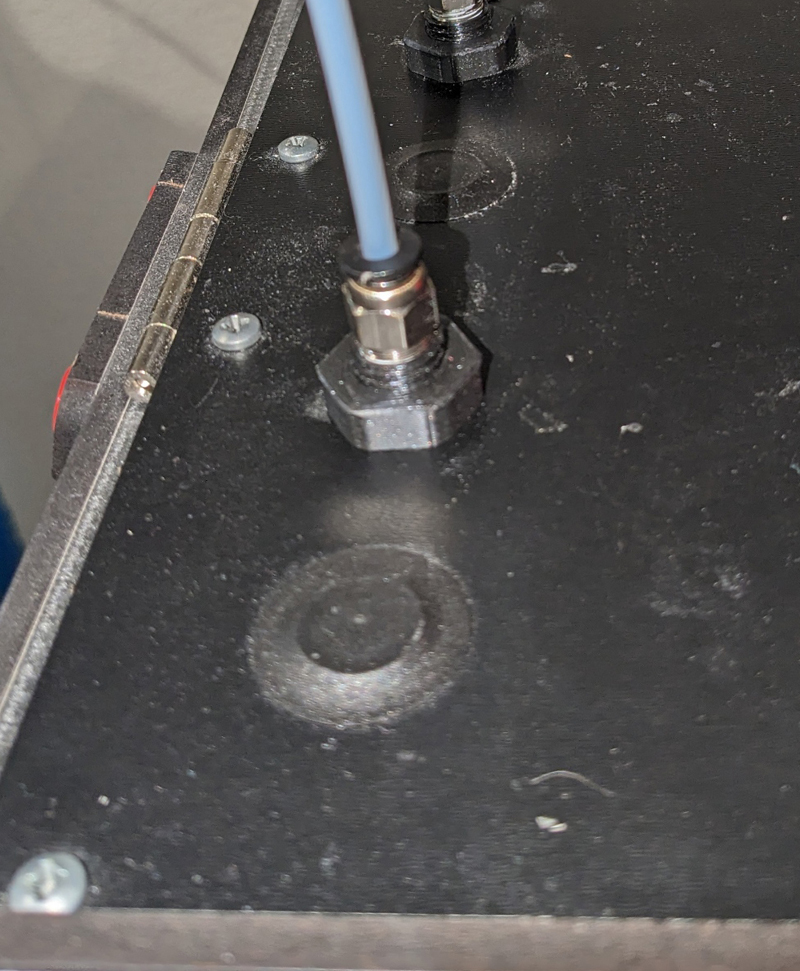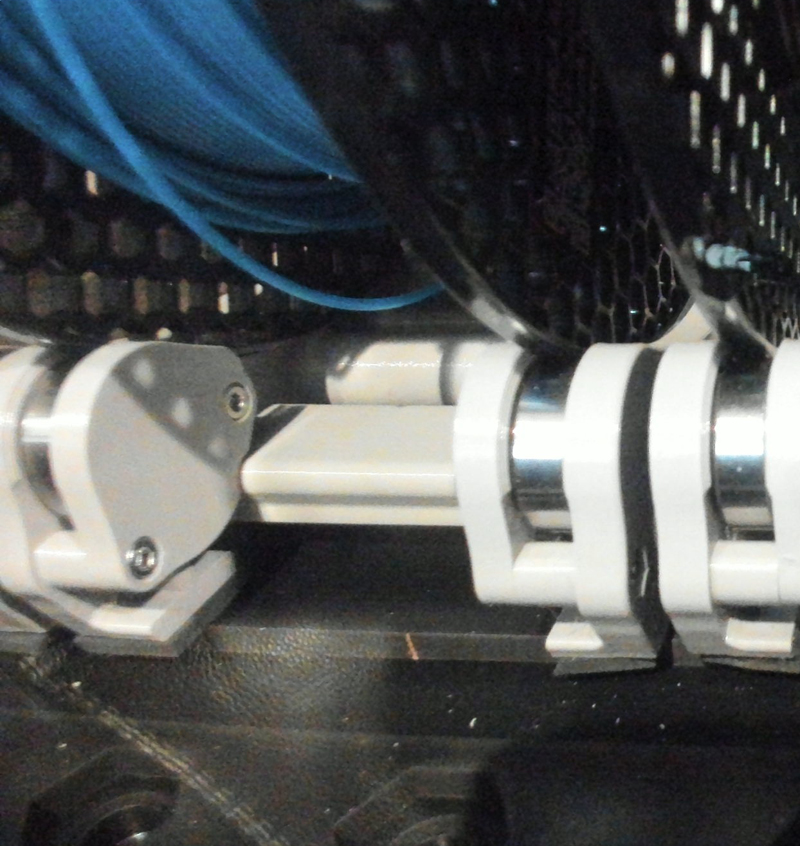
Prusa Original Enclosure and options
I have built a Lack Enclosure and I also have an Original Prusa Enclosure. The lack enclosure was cheaper cost wise, but if you count your time and print time as valuable, it wasn't.
Gains of the enclosure as I see it.
Key comparison beteween Lack Enclosure and Prusa Enclosure.
These are the mods I used for the Original Prusa enclosure and
what I think their value is for printing and daily servicing of the
machine.
Remote mounting of the MK3/MK4 power supply Medium
A Prusa Option. Recommended to keep from overheating and causing
premature failure of the power supply. The MK4 does not have a quick
disconnect option currently from Prusa. I have used
Duestch 8 pin connector with 16 AWG wire for this. Since water
resistance is not needed I removed the rubber gasket that is needed
for the water proofing. It makes unplugging it easier.
Example of the connectors wired into the MK4 power cable

Handles added to the Enclosure. Minor
Something to grab on to while moving the enclosure.

PTFE pass throughs in one enclosure handle Minor
This allowed me to put the MMU2S PTFE cables through the enclosure and manage the cables with the MMU2S in the horizontal position better. This picture is taken from the inside of the enclosure. Only 1 PTFE pneumatic fitting is needed on one side or the other. The 10mm fitting will let the 4mm OD tube pass all the way thru. I put mine on the inside, this prevents the PTFE tube being pulled into the enclosure more.

Converted the top to a lid on the enclosure. Medium
I moved the hinges to the side and had to drill 2 new holes in the enclosure for the hinges. The lid now opens sideways which is much easier than opening to the back, you need long arms for opening to the back if the enclosure is higher than waist high.

Plugging
the holes in the enclosure Medium
To warm up for Higher temperature printing, I sealed most of the holes in the enclosure. To prevent venting of most of the heat. I have a mod and many others do also for this. The enclosure will hold about 10-15C above ambient using the heat from the print bed. For PLA this extra heat is not needed. A door can be left open a little. The enclosure still assures a constant environment. Without the enclosure the draft from Heating or AC could effect the print. These were done in black PETG to match the enclosure.
I have also printed ASA in the enclosure and the higher temps needed are kept in the enclosure. My ASA prints have worked well.
Light option from Prusa.
I like the light, the only problem is I would like to mount it on top, not the side, but the cable is too short.
Fan/filter option
The fan/filer option is to filter the air inside the enclosure only. Mainly for ASA, ABS and similar materials that vent undesired gasses. The filter is rated at 600 hours of use. I only turn it on when needed. for these materials.
Filament storage and Dry BoxI built a filament box out of a sealed plastic container, but it was big and bulky for the size to fit the spools. From my various experiences I wanted the following.
I designed one and in the end it looked very much like a RepBox. I could have built it cheaper if I thought my time was free. I bought a RepBox. It is compact enough and fits in the space I have. It is not designed to be a "dry box", but they now have laminated and sealed panels. They also have a seal kit for the door. To make it a sealed box, you will need to use something like silicone sealer or caulk to seal the many inside corners of the box. That is what I did. With a silicone packet it now keeps low humidity for the filament. It does not have a heating element and will not actively dry filament, but it can protect the filament.

One addition I did was adding
PC4-M10 fittings for the inlets. I designed new inlets
that fit in the enclosure and held PC4-M10 fittings. These
Printables versions are essentially the same. These
capture the PTFE tube so it will not pull into the box when used with
a PC4-M10

The inlets from the inside.

After using the box for a while I removed the bars and plastic coverings the Filament rolls sat on. With cardboard filament rolls, there was too much friction and it caused skipping in the extruder and leaving gaps in the parts. I used 5 of these Spool Holders I had made previously. I made the knobs on the adjuster handles very thin, so they would fit with ease in the box. They appear to be working well with no skipping at the extruder. With an MK4, the skipping has been significantly reduced since it has a much better pull force.

Back to My 3D Printing
Last Update Nov 24, 2023